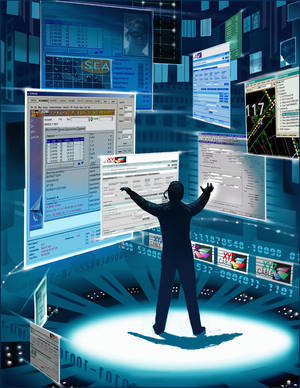Human-Computer Interaction

In the mid-80’s, with the advent of the IBM personal computer, computing technology began to migrate away from large-scale mainframe applications to those that could take place on the desktop. This migration transformed how computing technologies could be used in everyday life and had profound implications for how ubiquitous computing technology would become.
At that point, I began to wonder about how characteristics of the interface the software presented to the user might influence the user’s performance. We started to explore that question in a series of studies revealing that more human-like interfaces had distinctive and seemingly social-psychological effects on the user. Some of our published work on this topic (see below), along with work done at Stanford, reportedly inspired Microsoft engineers to develop a software agent called “Microsoft Bob.”
Quintanar, L. R., Crowell, C. R., Pryor, J. B. & Adamopoulos, J. (1982). Human-computer interaction: A preliminary social-psychological analysis. Behavior Research Methods & Instrumentation, 14, 210-220.
Phillips, J., Villano, M., Crowell, C. R., Setzer, M., & Miller, A. E. (1986). Typing versus menu selection for data entry: In search of the crossover point for maximum efficiency. Proceedings of the Academic Microcomputer Conference, 2, 157-169.
Quintanar, L. R., Crowell, C. R., & Moskal, P. M. (1987). The interactive computer as a social stimulus in human-computer interactions. In G. Salvendy, S. L. Sauter and J. J. Hurrell, Jr. (Eds.), Social ergonomic and stress aspects of work with computers. Amsterdam: Elsevier Publishers, 1987.